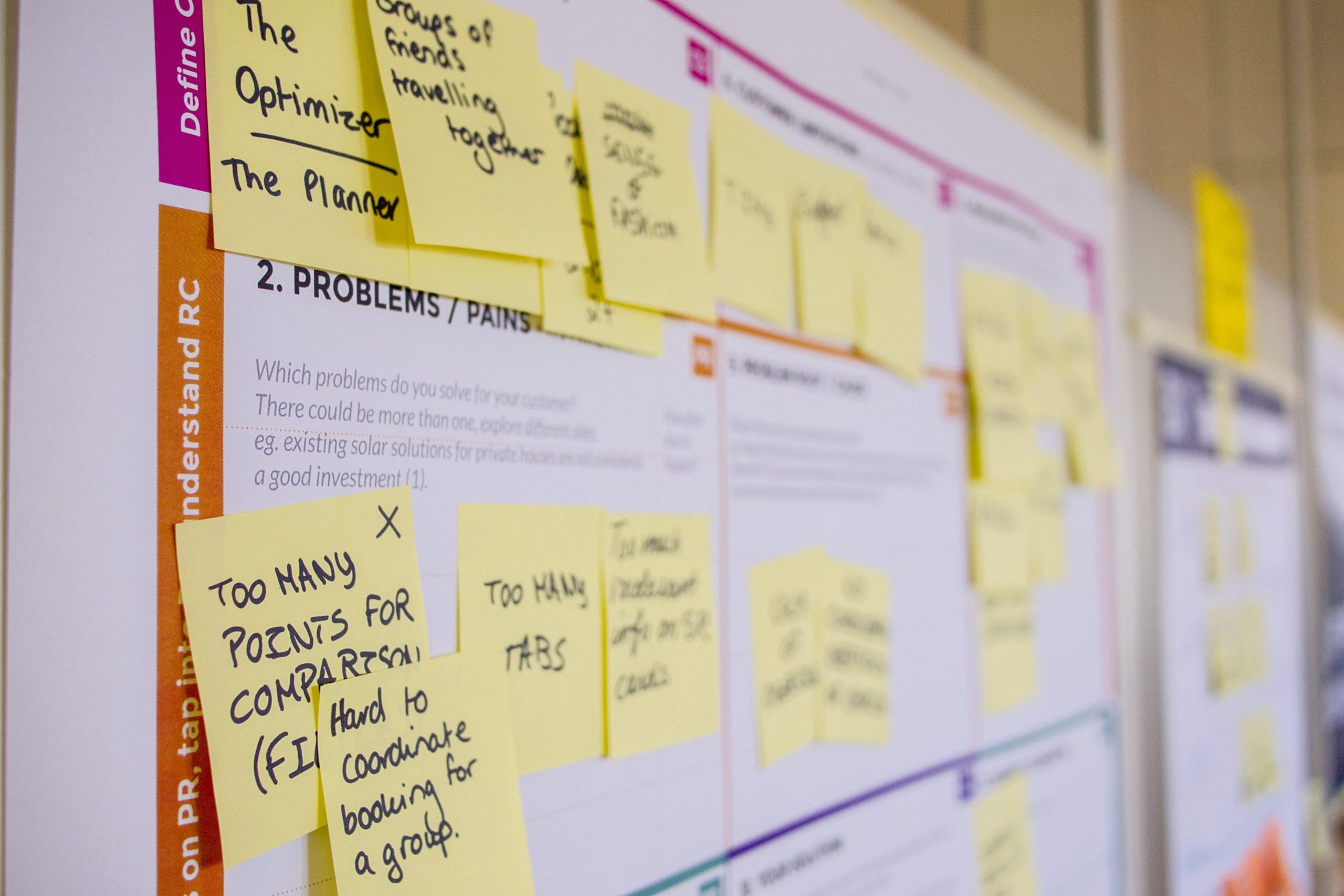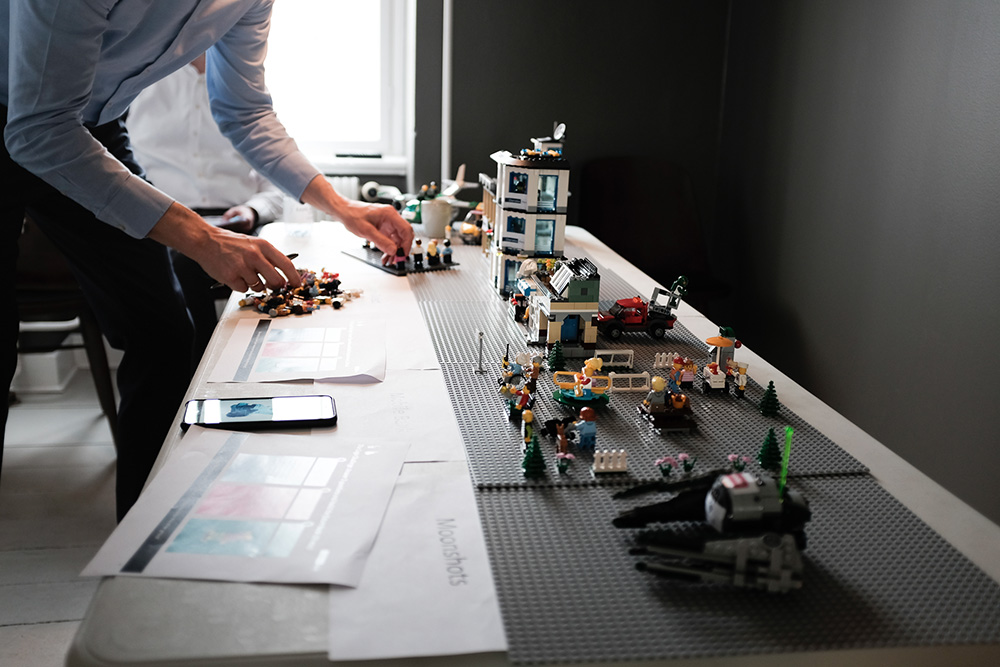

Don't you want to read? Try listening to the article in audio mode 🎧
Making an analysis of the User Experience Research done on a product or a service, looking at what satisfies the user, is a great way to develop successful projects. Classic usability tests are not always good enough, it is essential to have other information about users’ needs. A customer-focused design approach requires a deep understanding of the aspirations, habits and needs of the users.
Analysis of user research: User Experience Research
Quantitative methods
The data collected by Google Analytics is the main tool used for quantitative analysis. This is technical analysis, collected using SEO methods, it covers the searches carried out on Google and on websites about a product or service. The results of the research show, for example, difficulties encountered when using a product or service, documented by repeated searches of FAQs or user manuals and instructions. What are users mainly looking for? Whether it's a low-cost insurance policy or a well-ventilated camping tent, designers will have information to use to develop appropriate solutions to requirements that have been objectively identified from the internet or the manufacturer's website. Other tools include, for example, surveys and tests, but only if conducted on large samples. Users are often asked to perform a task using a product or service. Quantitative usability tests are focused on collecting metrics, such as the time taken to perform a given task. It is a matter of identifying factors that can be measured. Once this data has been collected from an appropriately sized sample, the results can be used to continually verify improvements in the usability of a product over a period of time or compare the product with the UX of a similar product made by competitors.Qualitative methods
Qualitative analysis methods of user experience are generally based on detecting behaviors through active user engagement, for example using a study diary, that is an analysis of daily use recorded by a sample of users for a few weeks. These methods are used to gain an in-depth understanding of the activities and daily life of individual users, or groups of users.Attitude research
The aim of attitude research is to evaluate the reasons why users have specific attitudes and feelings regarding an activity. For example, whether users enjoy using the product or not. Usually we use focus groups, card sorting, surveys, questionnaires and participatory design.Behavioural research
Behavioral search focuses on what users do with a product, it could be browsing a website or using an app or product. The tools used are A/B tests, eye-tracking, click flow analysis and usability surveys. Differences between user’s statements and behaviours are often highlighted, so it is good practice to use both attitude and behavioural research techniques.The benefits of User Experience Research
User Research must take place before the design of every project, both when creating interfaces and content for the web, and when designing goods or services. The analysis of user research helps to understand the ways in which people carry out activities and achieve the goals that they consider important. It provides the context and perspective and enables the designer to deliver useful, simplified design solutions that are based on users’ needs. Conducting user research helps the designer to identify and address prejudices and misconceptions that would otherwise be detrimental to the success of the product. Essentially it's about:- Creating user-relevant applications. Here, too, it is a question of adopting a mindset that has at its heart the customer and his needs. We all agree that it is useless to produce shampoo with an aroma of green apple if the market requires one with coconut fragrance. Designing and producing goods or services that meet the desires and needs of customers means costs are optimised by focusing on products that, as confirmed by analysis, have a good chance of success. It is not a coincidence that Design Thinking, a very common design technique, makes the task of achieving empathy with users the starting point for the design team. User experience research is one of the best ways to do this. This type of research is conducted in the initial phase of a project to ensure that the result is relevant to the user's needs.
- Designing goods and services that are easy and pleasant to use. Products are successful if they are easy to use. Even an insurance policy calculator, or a multifunction mixer for the kitchen, can be well-received by consumers because they are very easy to use. In addition, never underestimate aesthetics, one of the main criteria that has influenced consumer choices for a long time. Whether it's a web interface or the packaging of a consumer product, a good design offers pleasing and instant UX, which influences use or purchase. By offering a beautiful product you immediately stand out from your competitors, on the supermarket shelf or amongst websites. After all, people expect products to be easy to use, and not involve having to learn too much. They disregard reading the instruction manual and expect it to immediately do what they want. In particular a good level of usability and a corresponding high-quality user experience are essential to the success of a product or service in highly competitive sectors.
- Consider and evaluate the return on investment, or ROI, of UX design. In some companies UX design is not always given an adequate budget. If resources become scarce, the sector that deals with UX is often also one of the first where budget cuts can occur. This is because the advantages of investing in user experience are not immediately perceived by top managers.
Giving value to User Experience Research activity
We have said that UX designers often have to deal with user research activity being underestimated. It is often a question of building a culture of UXR. Here are some ideas that can be put into practice in companies.- Create an internal team of supporters. Almost all design teams use data from SEO, results from PPC, Conversion Rate Optimization (CRO) and the company’s own content. Production and marketing may be interested in supporting research, and it is also useful to other departments, such as the sales department.
- Draw up a specific project. A difference can be made by not asking for funds for generic activity, but rather presenting a clear and understandable project to top managers, one which highlights the objectives, benefits and the tools required for user experience research.
- Share within the company the results of the research about users. The results will also be useful to managers in other sectors, because knowing the customer is a fundamental part of any development strategy. Making the data about Personas targets public and providing information about the customer or the materials that are popular is useful to those who are responsible for writing the company’s blog and also to the marketing department.
In summary
User research and usability testing provide valuable information and input for UX designers. User experience research makes it possible to have a better understanding of the needs and behaviors of users. Usability tests enable you to reliably detect design usability issues. Both user research and usability testing are required for UX Design, which creates and significantly improves the quality of user experience. These activities take time and planning, however they cost much less than what would be required to correct defects that could appear after the product or service has been placed on the market if UX has not been taken into consideration.
Article updated on: 09 August 2023

Don't Waste Your Talent. Turn It Into a Career With a Course That Fits Your Needs!
Talent Garden is your Digital Skills Academy, offering courses in Digital Marketing, UX Design, Digital HR and Data Analysis designed to launch your career.
Keep reading

12
min read
UX Design: A complete guide to plan an efficient User Experience
When creating any digital project, the focus must now be on the user. Websites, marketing campaigns, posts and social ...
Talent Garden
22/01/2019

7
min read
How to Conduct Effective In-Site Interviews as a UX Researcher
As a UX researcher, gaining insight into your users' needs and behaviors is crucial for designing effective and ...
Talent Garden
24/02/2023

5
min read
What is a Customer Journey Map, what it is used for and how to create it
Some of the fundamental questions all businesses should ask themselves are: how do users use our product? What are the ...
Talent Garden
04/03/2022

3
min read
7 Ways To Improve Product Manager/UX Designer Relationships
A smooth and well-functioning relationship between Product Managers and UX Designers is essential for the product, the ...
Talent Garden
16/07/2019

